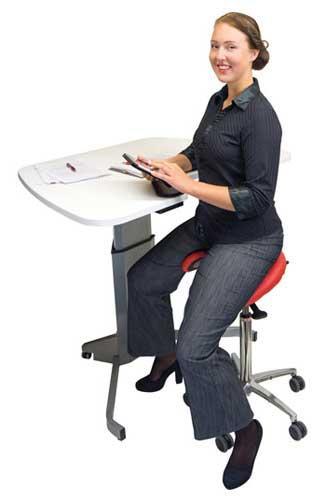Sitting and the Pelvic Area

The inner thigh has a lot more lymph nodes than are described or shown in books. This has a lot to do with sitting health.
The pelvis in general is very important from the point of view of sitting, because:
- Posture /angle of the pelvis determines the posture of the lower spine, and usually all the way to the head
- In sitting the weight of the upper body presses the pelvic tissues with bad consequences
- The biggest concentration of the lymph system organs is in the pelvic area
- There is a massive concentration of blood vessels in the pelvis
- There are the biggest muscles of the body in up to three layers
- The pelvis is the most common place of muscle tensions because of poor liquid circulation, pressure, unnatural positions, immobility, stress, etc.
- There are sensitive organs between the tail bone and sacrum with very high cancer concentration (males = half, females = quarter of all cancers, in an area the capacity of which is just over one litre)
- There are very sensitive genitals with lots of medical problems
- Clothing around the pelvic area is very often numerous and too tight, which disturbs the fluid circulation
- The sitting position and bending the pelvis to a 90 degree angle makes the clothing even tighter
- Excessive clothing and chair paddings cause the temperature often to be too high in the pelvic region causing, among other things, sweating, discomfort, poor hygiene, poor sperm quality and female genital infections
A very important but neglected area for ergonomic development is the furniture around the pelvic area.
Also in physical therapy and metabolism rehabilitation, massage, etc. the pelvic area should be emphasized much more than is traditionally done.
For example, consider doing the following: use loose and well ventilated clothes, engage in repeated physical activity during the work day, make micro movements while sitting on an active seat, sit on a two-part saddle chair, and have the sitting bones support the weight of the body, instead of the soft tissues.
he statements on the page are based on the following sources:
Michael Adams, Nikolai Bogduk, Kim Burton, Patricia Dolan: The Biomechanics of Back Pain
David A. Rubenstein, Wei Yin, Mary D. Frame: Biofluid Mechanics, an Introduction to Fluid Mechanics, Macrocirculation, and Microcirculation
Marcus J. Seibel, Simon P. Robins, John P. Bilezikian: Dynamics of Bone and Cartilage Metabolism, Principles and Clinical Applications
